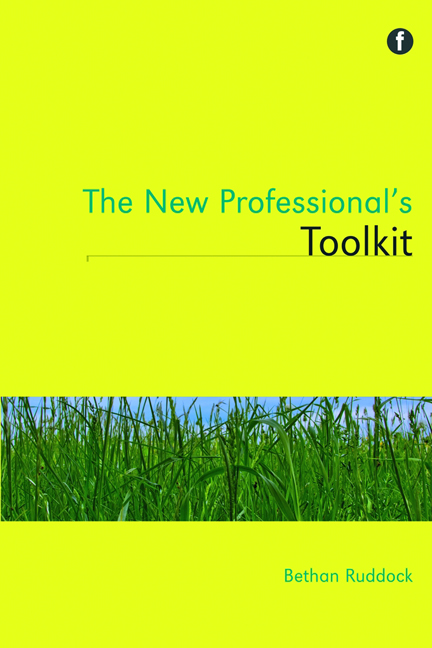Book contents
- Frontmatter
- Dedication
- Contents
- Preface
- Acknowledgements
- Glossary
- Introduction
- 1 Project management
- 2 Teaching, training and communicating
- 3 Meeting your users' needs and measuring success
- 4 Marketing your service and engaging stakeholders
- 5 Using technologies
- 6 Getting and staying online
- 7 Generating funding and doing more with less
- 8 Managing money, budgets and negotiating
- 9 Information ethics and copyright
- 10 Upskilling and professional development
- 11 Networking and promoting yourself
- 12 Professional involvement and career development
- Conclusion
- Appendix: Budgeting example spreadsheet
- Index
2 - Teaching, training and communicating
Published online by Cambridge University Press: 08 June 2018
- Frontmatter
- Dedication
- Contents
- Preface
- Acknowledgements
- Glossary
- Introduction
- 1 Project management
- 2 Teaching, training and communicating
- 3 Meeting your users' needs and measuring success
- 4 Marketing your service and engaging stakeholders
- 5 Using technologies
- 6 Getting and staying online
- 7 Generating funding and doing more with less
- 8 Managing money, budgets and negotiating
- 9 Information ethics and copyright
- 10 Upskilling and professional development
- 11 Networking and promoting yourself
- 12 Professional involvement and career development
- Conclusion
- Appendix: Budgeting example spreadsheet
- Index
Summary
Introduction
At some point your role as an information professional will almost certainly involve some form of teaching or training, such as:
• teaching users in large groups (e.g. as inductions)
• teaching users in groups, with hands-on (e.g. information literacy or database training)
• teaching users one to one
• training fellow professionals (e.g. at a workshop, training day or conference)
• training colleagues (e.g. training new staff, passing along information from a training course or conference)
• delivering presentations to users, stakeholders, colleagues or professional peers.
Even if you don't – or think you don't – have to do any of these things, learning the principles of teaching and training will help you to communicate effectively, and become more confident when communicating with others.
Effective communication
Most roles will cite communication as a core skill. For communication to be fully effective, it needs to fulfil a need for both parties: the communicator must impart the information they intended to; and the recipient must feel a benefit from receiving this information.
It takes skill to craft a message that is clear, concise and relevant. This can be much easier in one-to-one communication than in group communication. With one-to-one contact you can tailor your communication specifically to the person you are communicating with: use their preferred vocabulary, meet their needs, and fall within their frame of reference.
With large numbers of people it can be a little harder. It helps if you can address coherent groups – groups that are likely to have the same communication need and receive the same communication benefit. You can start to do this by dividing your potential audience into sections, and deciding how you can most effectively communicate with each section (see Chapter 4 for more about identifying and engaging with stakeholders).
Effective communication can help you to show value and encourage use by using the value terms your communicatees recognize.
Teaching and training
The information professions have traditionally been seen as professions for introverts. In a panel at the 2011 Special Libraries Association (SLA) Conference in Philadelphia, Stephen Abram outed himself as an extrovert, and admitted that it made him unusual in his chosen profession. He suggested that the proportion of extroverts to introverts (approximately 75:25) in the population as a whole is reversed in librarianship and related professions.
- Type
- Chapter
- Information
- The New Professional's Toolkit , pp. 15 - 36Publisher: FacetPrint publication year: 2012



